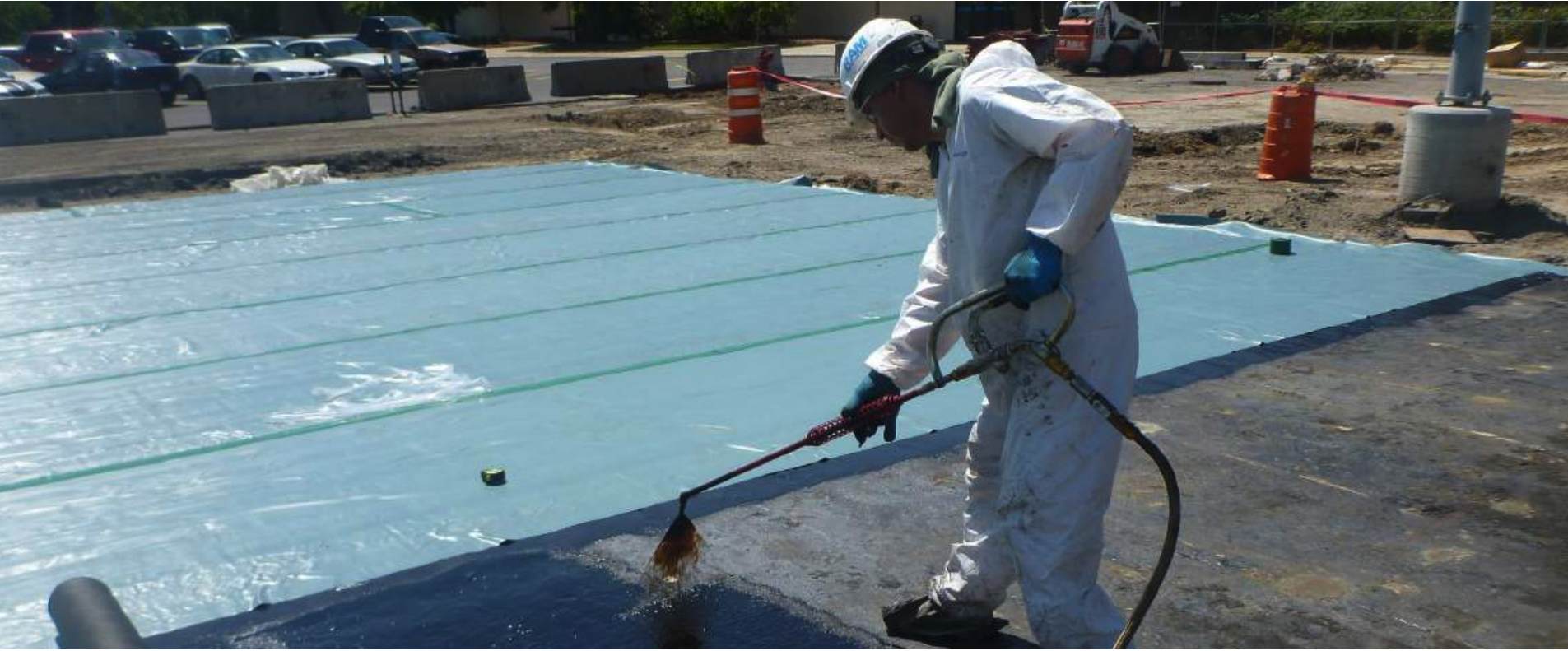When deciding the right spray-applied waterproofing membrane to use for restoration or rehab in a building, it is important to examine both the building and available products and select the best fit for the specific conditions.
Evaluating Waterproofing Needs for an Existing Building
It is key to conduct a thorough review to wholly evaluate the condition and effectiveness of the installed waterproofing on an existing commercial building. Here is a checklist of steps to take:
Consult With a Professional
The source of water intrusion is not always obvious, which is why the first step in any restoration or rehab project should be consulting with professionals. Completing a forensic investigation will help find the root cause of the water intrusion and help determine the right remedial waterproofing approach.
Know the Building’s Construction
When dealing with an older building, always examine the existing waterproofing system as it might have deteriorated over time or been compromised by factors not related to the actual waterproofing, such as concrete cracks due to repeated cycles of thermal expansion and contraction. Even the most superficial leak can lead to larger problems.
Review and Consider Building Site Conditions
The building site conditions are an important part of the building’s history and also helps with choosing the right waterproofing system.
The following questions can help identify the right waterproofing product for a buildings specific site conditions:
- What is the overall area of the space that needs waterproofing repair?
- How accessible is the site?
- Is it known what type of waterproofing was originally applied?
- What remedies have been attempted to this point?
- Are slope and drainage included in the building design?
- Are there contaminants in the water near or around the site?
- What are the desired durability and the necessary levels of redundancy?
Does the Waterproofing Need To Be Repaired or Replaced?

As outlined above, there are many things to evaluate first before deciding the best approach to any waterproofing restoration project. It is also important to consider:
- What is the building’s history? Find out how the building has responded to various weather events and temperature fluctuations over time. These factors can impact a building’s integrity and its ability to prevent leaks.
- Does it have ambient moisture? Always know where moisture is originating in a building. Controlling the level of ambient moisture can be as easy as upgrading the HVAC system or as difficult as finding a leak in the building envelope or plumbing system.
- Is “patching” from inside the structure ever a viable solution? In most cases, patching will not work. While cementitious coatings and crystalline topical treatments may solve minor issues, it is typically only a temporary cosmetic solution that can redirect or trap moisture and create another problem that could potentially be worse.
Before Deciding, Conduct a Cost Analysis
Building owners should consider more than initial costs in waterproofing materials since higher quality products will help to prevent excessive maintenance or having to repair water damage. Doing a life-cycle cost analysis might help building owners determine where to invest more in building materials.
Upgrading the Drainage System
Sometimes improving the drainage system or installing additional drainage is necessary to protect the building envelope.
Above-grade drainage panels help channel water away toward drains to eliminate build-up. Below-grade drainage panels help serve a few purposes:
- They help divert water away from the structure to designated discharge points.
- They help alleviate direct hydrostatic pressure against the existing waterproofing.
- Drainage strips can help collect and expel methane gas and other contaminants from underneath structures. EPRO provides a wide variety of drainage composites to address several different conditions.
Contact an EPRO Representative Today
EPRO has experts who are ready to help with answers about choosing the best waterproofing and contaminant systems for restoration and rehab projects and can help ensure their integrity through proper testing.
Have questions or want to learn more? Reach out to EPRO about collaborating on a project.
